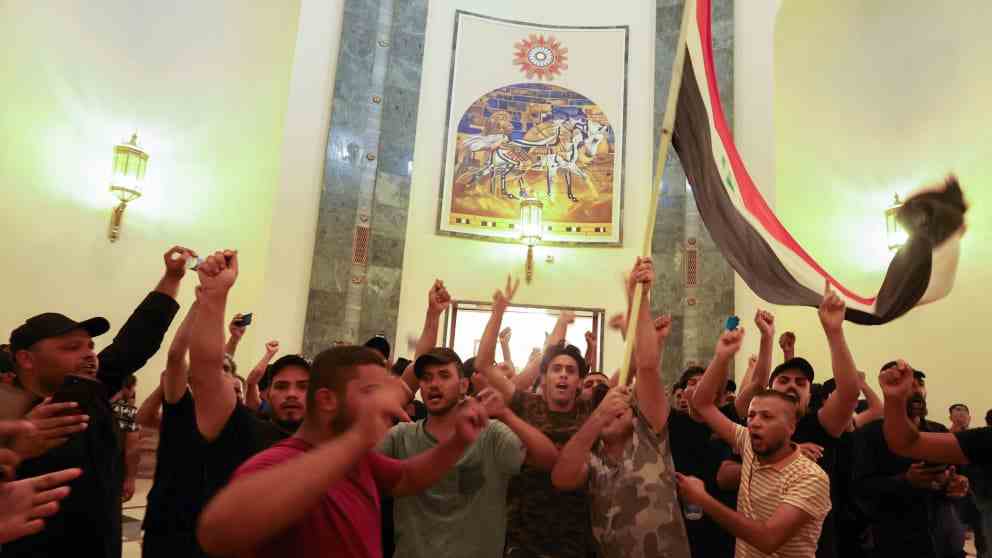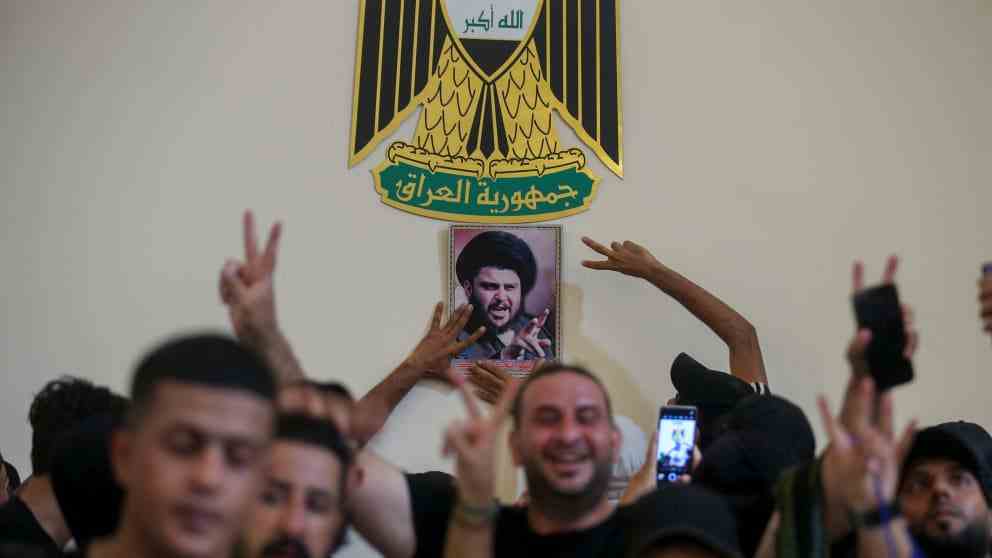After Shiite leader Sadr announced his withdrawal |
Demonstrators storm the presidential palace in Baghdad
The situation in the Iraqi capital Baghdad is escalating again.
After violent demonstrations in recent weeks, supporters of the influential Shiite leader Moqtada Sadr (47) stormed the presidential palace on Monday afternoon.
The government building is located in the normally heavily secured Green Zone, which is also where the representations of a number of western countries are located.
After Sadr announced his retirement from politics on Monday morning and had all his party offices closed, his supporters called for protests across the country.

Moqtada Sadr’s supporters at the Presidential Palace in Baghdad’s Green Zone

Moktada Sadr supporters demonstrate in the Green Zone
“I had decided not to get involved in political affairs, but now I am announcing my final retirement and the closure of all facilities,” Sadr said on Twitter on Monday. Religious institutions directly associated with him are excluded. “If I die or am killed, I ask for your prayers.”
There has been a curfew in Baghdad since 2:30 p.m. (CEST) due to the protests. Streets within the Iraqi capital are cordoned off and all security forces are on alert.
Security forces used tear gas on the grounds of the presidential palace to disperse the demonstrators.
Sadr’s supporters already had by the end of July stormed the Iraqi parliament, have been occupying the area ever since. Last week they briefly blocked access to the country’s highest court. On posters they called for the dissolution of parliament, new elections and the fight against corruption.
Iraq in crisis mode
Iraq has been in a deep political crisis for months. After the parliamentary elections around ten months ago, this had become more and more acute.
︎ Sadr’s movement emerged as the clear victor at the time, but was unable to achieve the important two-thirds majority required for the presidential election. A new government can only be formed with the support of the head of state. This created a political stalemate.
In recent weeks, Sadr’s supporters have repeatedly protested against the candidacy of Mohammed Shia al-Sudani for the post of prime minister, who was put up by an alliance of pro-Iranian Shiites – the so-called coordination framework.

Shia leader Moqtada Sadr
► Sadr and his alliance emerged as the strongest force from the parliamentary elections in October and is considered a “kingmaker” when it comes to filling top positions.
It remains to be seen whether Sadr will finally – as he claims – withdraw from Iraqi politics. He had already announced in 2014 that he would be retiring from politics, two and a half months before the parliamentary elections planned at the time.
Sadr comes from a family of prominent clerics. After the US army invaded Iraq in 2003, he founded a militia, the “Mahdi Army”. Sadr meanwhile lived in Iran.

